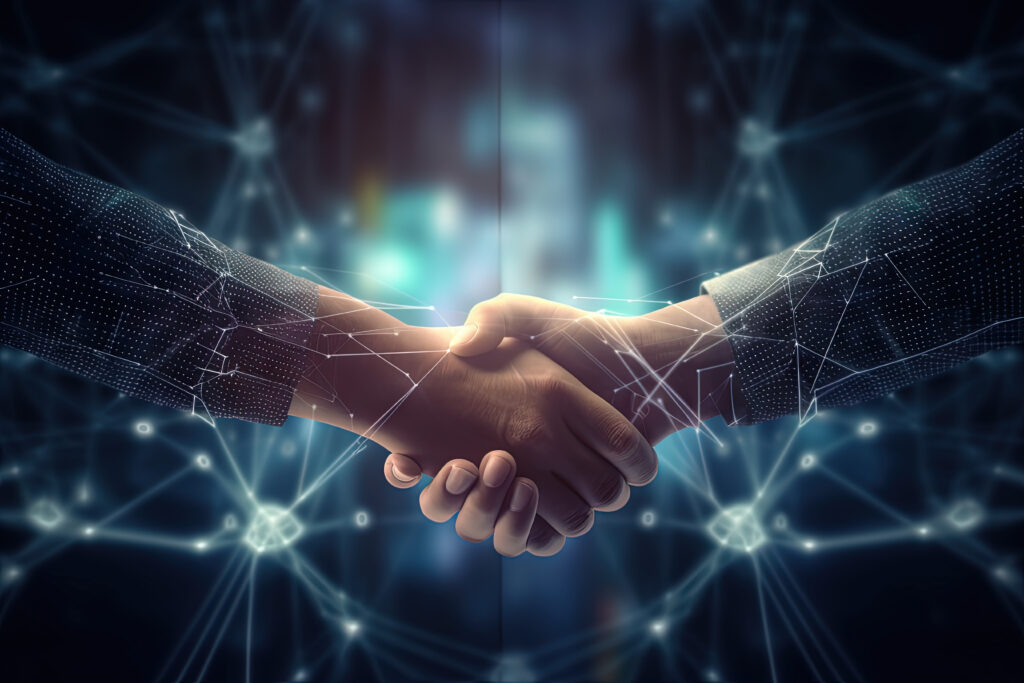Contract negotiation is one of the newest business processes with great potential to benefit from the use of artificial intelligence and generative AI (GenAI).
A recent BBC report detailed how, for the first time, an AI application negotiated a contract with another AI application; in this case, the contract happened to be a nondisclosure agreement (“NDA”). The British firm Luminance used Autopilot, an application they developed to analyze and make changes to contracts.
A demo showed Luminance’s ability to read a contract, remediate risk, and respond to changes made by the counterparty’s AI. All that work was done automatically with the respective AI engines applying knowledge from their business’ previously negotiated agreements, as well as their preferred positions in negotiations.
Discover how AI has created a new ecosystem of partnerships with a fresh spirit of customer-centric cocreation and a renewed focus on reimagining what is possible. The Acceleration Economy AI Ecosystem Course is available on demand.
Is an NDA too simple a place to start? In my view, definitely not. Few tasks are more frustrating in the contract negotiation process than wasting valuable time redlining NDAs and going back and forth to reach an agreement before the real negotiating begins.
In partnership with Microsoft and an AI legal startup, British law firm Allen & Overy developed ContractMatrix, an AI-powered contract negotiation application that creates new proposed agreements based on existing contract templates. An A&O partner said the firm’s aim is to “disrupt the legal market before someone disrupts us.” I love that. It’s always more fun to be a disruptor than a disruptee.
Ask Cloud Wars AI Agent about this analysis
Why this surge of AI activity in the legal profession? There are some facets of AI that, as they’ve become more sophisticated, are powerful enablers for creating and optimizing legal contracts:
- Big data. Think about yourself and the information that’s out there on each one of us – photos, blog posts, Instagram, to name a few. The same is true for contracts and business information. The data set is huge, and the larger the data set that an AI application is trained on, the more robust its results can be.
- Machine learning. ML is the part of AI that looks for patterns. So now that big data can be accessed, ML is used to identify patterns. How long are typical agreements in the food industry? What factors should be allowed to influence cost increases in an offshore technology provider’s pricing model? ML helps derive the recommendation.
- Large Language Models. LLMs that drive GenAI focuses on language and are at the core of contract negotiation applications. They analyze big data, employ the pattern recognition of ML, and then recognize, predict, and generate text and other content. Effectively, LLMs use statistical models to predict what the next words should be in a contract; LLMs “write” the suggested content.
With technology innovations enabling the development of contract negotiation software, what are the business benefits? Four of my favorites:
- Speed of completion. Speed comes to mind right off the top; the ability of a headcount-constrained organization to increase its productivity by using a machine to take over mundane tasks like redlining is extremely valuable. The contract negotiation applications eliminate scheduling obstacles. You don’t have to be slowed down by individuals, calendars or anyone’s availability to attend a meeting if the AI is doing the work.
- Reduce bias. We humans only know what we know. We draw on our own experiences, supplemented by whatever guidance, norms, or policies our companies have developed and codified. Today, AI-assisted tools can draw on much larger data sets than you or I can, and they don’t have the bias that humans may bring from past experiences.
- Consistency. The contract management systems developed to date have helped companies take a giant step forward in standardizing contracts. But they require headcount and discipline. And there are always outliers – that errant contract that is sitting on someone’s desk or in their email, or the time that the supplier of a critical service insisted that the agreement be created using their template. AI ensures consistency in contract interpretation and application of predefined rules, minimizing the risk of human error and discrepancies across multiple negotiations. Even though old contracts may exist that deviate from the preferred format, new ones being developed going forward will adhere and, over time, the level of nonconformance will decline.
- Risk management/compliance. AI can assist in monitoring and ensuring compliance with legal and regulatory requirements, reducing the risk of unintentional violations during contract negotiations. I’ve been in a situation where there were accidental breaches of government regulations, and it was an enormous task to ferret out the contracts that needed to be changed.
There are certain things that AI can’t do. It’s not necessarily going to recognize a “great deal” when it sees one. There may be particular plans or needs that your company has that haven’t been codified in any way; they reside in the brains of the professionals doing the negotiation. But all in all, AI and GenAI together offer a great opportunity to give the mundane work to the machine and get it done more efficiently — and painlessly.











